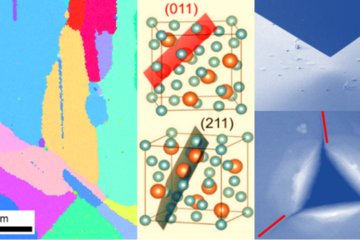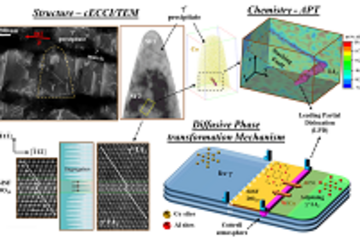All genres
41.
Talk
Properties modification by gradual devitrification of amorphous steels: element-resolved corrosion studies and mechanical behavior. 21st International Symposium on Metastable Amorphous and Nanostructured Materials, ISMANAM 2014, Cancun, Mexico (2014)
42.
Talk
Grain boundary sulphidation of nickel-based alloys applied in high-efficient coal-power plants. EUROCORR 2014 , Pisa, Italy (2014)
43.
Talk
Elektrochemie mit Online-Spurenanalytik mittels ICP-MS. 26. Spektrometertagung, Friedrichshafen, Germany (2013)
44.
Talk
From corrosion to batteries: Studies on electrochemical interfaces. Seminar talk at SLAC National Accelerator Laboratory, Stanford, CA, USA (2012)
45.
Talk
Corrosion and Dealloying of Crystallized Amorphous Steel. Pacific Rim Meetin on Electrochemical and Solid-State Science PRIME 2012 / ECS 222, Honolulu, HI, USA (2012)
46.
Talk
Amorphous steel: Microstructure, corrosion, and surface analysis. High Nirogen Steels & Interstitual Alloys (HNS - 2012), Chennai, India (2012)
47.
Talk
Reaktive Grenzflächen auf der atomaren Skala. Colloquium at University of Siegen, Siegen, Germany (2012)
48.
Talk
Mesoporous structures by selective dissolution of alloys. Int. Symp. on Novel and Nano Materials 2012, Istanbul, Turkey (2012)
49.
Talk
Crystallization of amorphous alloys and its effect on the structure and corrosion properties. 19th International Symposium on Metastable Amorphous and Nanostructured Materials, ISMANAM 2012, Moscow, Russia (2012)
50.
Talk
Lithium-Ion batteries: Mechanism, material aspects, and challenges. Colloquium, University of Hasselt, Belgium (2012)
51.
Talk
From inhibition of dealloying to passivation of amorphous steel. Seminar talk at University of Ulm, Ulm, Germany (2012)
52.
Talk
Crystallization in Fe-based metallic glasses and formation of nanoporous structures from amorphous alloys precursors. IFES2012, 53rd International Field Emission Symposium, Tuscaloosa, AL, USA (2012)
53.
Talk
Corrosion of model alloys: Binary noble metal alloys and amorpous steel. Seminar talk at University of Gießen, Gießen, Germany (2012)
54.
Talk
Corrosion analysis and corrosion breakdown of Fe-based amorphous and nanocrystalline alloys. 220th ECS Meeting and Electrochemical Energy Summit, Boston MA, USA (2011)
55.
Talk
Oberflächen auf der atomaren Skala: Entlegierung als ein Beispiel aus der Korrosion. Colloquium, Technische Universität Hamburg-Harburg, Germany (2011)
56.
Talk
Corrosion behaviour of iron-based metallic glasses during crystallization. BMG8, The 8th International Conference on Bulk Metallic Glasses, Hong Kong, China (2011)
57.
Talk
Corrosion behaviour of Fe-Al(-X) alloys in steam. Deutsche Gesellschaft für Materialkunde - DGM, Technical Committee Meeting, Technische Universität Dresden, Germany (2011)
58.
Talk
Main Scale formation of Fe-Al based model alloys in steam. International Symposium on High-temperature Oxidation and Corrosion, Zushi, Japan (2010)
59.
Talk
Dealloying studies of Cu3Pd single crystal surfaces. ECS 218th Meeting, Las Vegas, NV, USA (2010)
60.
Talk
Selective Dissolution of Modified single-Crystalline Model Systems. EUROCORR 2010, Moskau, Russia (2010)











